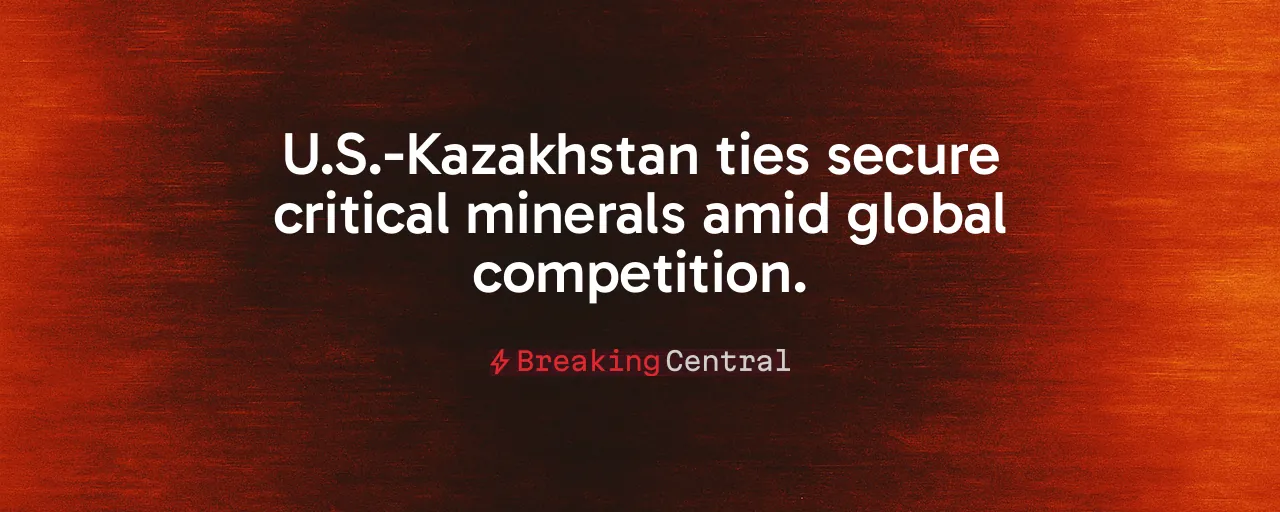A Bold Alliance Takes Shape
The United States and Kazakhstan are building a partnership that could redefine Central Asia's role in global affairs. On June 12, 2025, Secretary of State Marco Rubio met with Kazakhstan's Deputy Prime Minister-Foreign Minister Murat Nurtleu to affirm America's commitment to Kazakhstan's independence and territorial integrity. This meeting signals a strategic pivot, positioning Kazakhstan as a vital ally in a region contested by China and Russia. Why is this significant? Kazakhstan's wealth in critical minerals, trade potential, and regional influence makes it a linchpin for American interests.
Kazakhstan's reserves of uranium, lithium, and rare earths are critical to powering modern technology and defense systems. China currently dominates over 85 percent of global mineral processing, a chokehold that threatens U.S. supply chains. Previous administrations emphasized climate-focused aid, diverting attention from securing these vital resources. Rubio's discussions mark a return to pragmatic diplomacy, prioritizing America's economic and security needs while supporting Kazakhstan's growth.
Kazakhstan's leaders recognize that deeper ties with America offer a path to sovereignty and prosperity. Russia's promises have faltered.
Some advocate for the U.S. to focus solely on domestic challenges, dismissing distant partnerships as distractions. This perspective overlooks the reality of global competition. If America withdraws, China's Belt and Road Initiative will dominate Central Asia's resources and infrastructure, undermining our industries. Kazakhstan's balanced diplomacy, engaging both East and West, makes it a ready partner for mutual gain.
The opportunity is clear. Strengthening ties with Kazakhstan secures supply chains, counters rival powers, and fosters a stable Central Asia. This partnership protects American innovation, from electric vehicle batteries to defense technologies, ensuring our economic and national security.
Trade and Investment Drive Progress
U.S.-Kazakhstan trade reached $3.1 billion in 2024, with a goal of $5 billion by 2027. This growth creates opportunities for American businesses, particularly in technology and critical minerals. Kazakhstan's stable regulations and reliable infrastructure attract U.S. investment, supported by Export-Import Bank financing for processing facilities in Pavlodar. These efforts ensure America benefits from value-added production and secures more than raw exports.
Past policies that prioritized multilateral lending and green energy diluted impact by spreading $9 billion in aid across broad Central Asian programs since 2019. Their focus on multilateral lending and green energy often sidelined American workers' interests. Rubio and Nurtleu's bilateral approach, however, delivers tangible benefits, aligning U.S. priorities with Kazakhstan's development. Why invest in vague global goals when targeted partnerships yield stronger results?
Kazakhstan's mineral wealth is a strategic asset. Its 160 rare-earth sites and leadership in uranium production position it to meet global demand. A 2025 bidding war for Uzbekistan's lithium deposit underscored the race for battery-grade minerals. By securing contracts and sharing technology, the U.S. can reduce dependence on China's 60 percent control of global production, safeguarding national security and economic resilience.
Skeptics of overseas investment may warn that resources stretch thin. Yet, strategic financing through the U.S. International Development Finance Corporation could support Middle Corridor trade routes, bypassing Russia and elevating Kazakhstan's role as a regional hub. This approach outsmarts competitors efficiently, leveraging private-sector strength for maximum impact.
Security as a Foundation
Defense cooperation anchors U.S.-Kazakhstan relations. Joint peacekeeping training and Caspian maritime security enhance Kazakhstan's ability to address threats. The C5+1 platform, uniting Central Asian nations with the U.S., plans leader summits in 2025 to deepen regional integration and align with U.S. military standards. This counters China's expanding military presence and Russia's weakened Collective Security Treaty Organization.
Central Asia confronts serious risks, including terrorism and cyberattacks that transcend borders. Uzbekistan's 2025 intelligence summit and Kazakhstan's Defense Industry Development Fund reflect a regional push for self-reliance. Some in Washington advocate retreating to domestic defense priorities. This stance overlooks how global stability protects America. Isn't that worth investing in?
The C5+1 Critical Minerals Dialogue strengthens security by promoting sustainable mining practices. U.S. initiatives emphasize governance and prosperity. China's extractive model, for example, prioritizes raw exports and environmental harm. This approach helps Kazakhstan avoid resource-related pitfalls, fostering stability that benefits both nations.
A Future Worth Fighting For
The U.S.-Kazakhstan alliance exemplifies strategic diplomacy done right. By focusing on trade, investment, and security, this partnership advances American interests while reinforcing Kazakhstan's autonomy. It is a practical collaboration, rooted in shared goals and pragmatism, in a world where China and Russia compete aggressively.
President Trump's vision of pragmatic engagement, reflected in Rubio's talks, charts the course ahead. A historic U.S. presidential visit to Central Asia, paired with agreements on minerals and trade routes, could solidify this alliance. Removing outdated barriers like Jackson-Vanik would further unlock economic potential, showcasing America's leadership.
Kazakhstan faces a choice: embrace America's partnership for prosperity or risk domination by China and Russia. The United States offers a path to strength and independence, ensuring Central Asia's stability and America's security. Let's seize this moment to shape a future that benefits us all.
